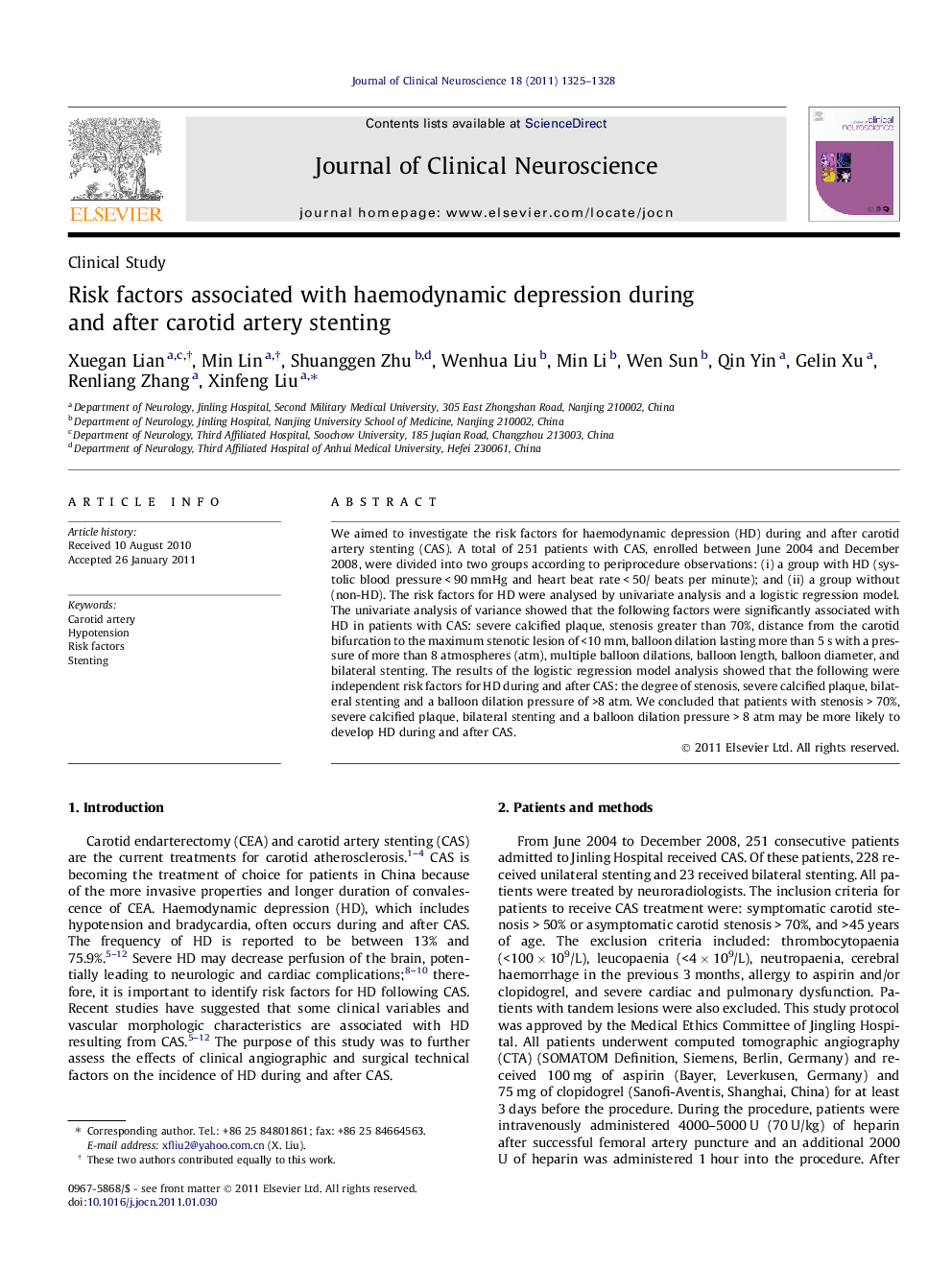| Article ID | Journal | Published Year | Pages | File Type |
|---|---|---|---|---|
| 3060747 | Journal of Clinical Neuroscience | 2011 | 4 Pages |
We aimed to investigate the risk factors for haemodynamic depression (HD) during and after carotid artery stenting (CAS). A total of 251 patients with CAS, enrolled between June 2004 and December 2008, were divided into two groups according to periprocedure observations: (i) a group with HD (systolic blood pressure < 90 mmHg and heart beat rate < 50/ beats per minute); and (ii) a group without (non-HD). The risk factors for HD were analysed by univariate analysis and a logistic regression model. The univariate analysis of variance showed that the following factors were significantly associated with HD in patients with CAS: severe calcified plaque, stenosis greater than 70%, distance from the carotid bifurcation to the maximum stenotic lesion of <10 mm, balloon dilation lasting more than 5 s with a pressure of more than 8 atmospheres (atm), multiple balloon dilations, balloon length, balloon diameter, and bilateral stenting. The results of the logistic regression model analysis showed that the following were independent risk factors for HD during and after CAS: the degree of stenosis, severe calcified plaque, bilateral stenting and a balloon dilation pressure of >8 atm. We concluded that patients with stenosis > 70%, severe calcified plaque, bilateral stenting and a balloon dilation pressure > 8 atm may be more likely to develop HD during and after CAS.
